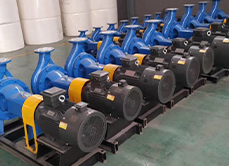Slovak
- Afrikaans
- Albanian
- Amharic
- Arabic
- Armenian
- Azerbaijani
- Basque
- Belarusian
- Bengali
- Bosnian
- Bulgarian
- Catalan
- Cebuano
- Corsican
- Croatian
- Czech
- Danish
- Dutch
- English
- Esperanto
- Estonian
- Finnish
- French
- Frisian
- Galician
- Georgian
- German
- Greek
- Gujarati
- Haitian Creole
- hausa
- hawaiian
- Hebrew
- Hindi
- Miao
- Hungarian
- Icelandic
- igbo
- Indonesian
- irish
- Italian
- Japanese
- Javanese
- Kannada
- kazakh
- Khmer
- Rwandese
- Korean
- Kurdish
- Kyrgyz
- Lao
- Latin
- Latvian
- Lithuanian
- Luxembourgish
- Macedonian
- Malgashi
- Malay
- Malayalam
- Maltese
- Maori
- Marathi
- Mongolian
- Myanmar
- Nepali
- Norwegian
- Norwegian
- Occitan
- Pashto
- Persian
- Polish
- Portuguese
- Punjabi
- Romanian
- Russian
- Samoan
- Scottish Gaelic
- Serbian
- Sesotho
- Shona
- Sindhi
- Sinhala
- Slovak
- Slovenian
- Somali
- Spanish
- Sundanese
- Swahili
- Swedish
- Tagalog
- Tajik
- Tamil
- Tatar
- Telugu
- Thai
- Turkish
- Turkmen
- Ukrainian
- Urdu
- Uighur
- Uzbek
- Vietnamese
- Welsh
- Bantu
- Yiddish
- Yoruba
- Zulu
Telephone: +86 13120555503
Email: frank@cypump.com
aug . 19, 2024 02:14 Back to list
Understanding Sewer Injection Pumps for Efficient Waste Management Solutions
Sewer Injection Pumps An Overview
Sewer injection pumps play a crucial role in the management and operation of wastewater systems. These specialized pumps are designed to move sewage or wastewater from lower to higher elevations, ensuring that it reaches treatment facilities efficiently. The function of sewer injection pumps is vital in maintaining the integrity and sanitation of urban infrastructure, making them an indispensable component of modern waste management systems.
Understanding Sewer Injection Pumps
Sewer injection pumps, often referred to as sewage pumps or effluent pumps, are engineered to handle the transport of liquids that contain solid waste. Unlike standard water pumps, these specialized devices are equipped with robust impellers and passageways designed to accommodate larger solids and prevent clogging—a common issue in sewage systems. Their construction often features corrosion-resistant materials to withstand harsh conditions and prevent degradation from the chemicals present in sewage.
Types of Sewer Injection Pumps
There are primarily two types of sewer injection pumps submersible pumps and pedestal pumps.
1. Submersible Pumps These pumps are designed to operate underwater, making them ideal for situations where the sewage needs to be pumped from a pit or basin. They are compact and efficient, often providing significant power and versatility. Submersible pumps are favored in residential and commercial sewage systems because they reduce the risk of odors and surface contamination.
2. Pedestal Pumps Unlike submersible pumps, pedestal pumps are installed above the sewage basin. They utilize a long shaft to reach down into the liquid. While they may occupy more space and are less efficient in certain applications, pedestal pumps are easier to service and maintain, especially in heavy-duty industrial settings.
sewer injection pump

Applications of Sewer Injection Pumps
Sewer injection pumps are employed in various settings, from residential homes to large municipal wastewater treatment facilities. In residential applications, these pumps help homeowners manage greywater or sewage that cannot naturally flow into the sewer system due to geographical elevations. In commercial and industrial contexts, they are often part of larger lift stations that move large volumes of wastewater long distances to treatment plants.
Moreover, sewer injection pumps are vital during emergency situations, such as floods, where the rapid removal of excess sewage is necessary to prevent environmental contamination and damage to infrastructure.
Maintenance and Considerations
Maintaining sewer injection pumps is critical to ensuring their longevity and effectiveness. Regular inspections for wear and tear, along with the cleaning of any debris that may clog impellers, are essential. Operators should also check electrical components and seal integrity, as these factors can significantly affect pump performance.
When selecting a sewer injection pump, several considerations come into play, including the pump's capacity, the nature of the waste it will handle, and the distance it needs to pump the sewage. These factors determine the most suitable type and model for a particular application.
Conclusion
In summary, sewer injection pumps are vital components of waste management systems, enabling the efficient transport of sewage and wastewater. Their design and functionality ensure that urban infrastructure remains safe and sanitary, preventing overflow and contamination. With proper maintenance and consideration of specific application needs, sewer injection pumps can provide reliable service for years, contributing to the overall effectiveness of sewage management and environmental protection. As urban areas continue to grow, the importance of these pumps—and their role in sustainable infrastructure—will only increase.
-
Custom Drilling Mud and Slurry Pump Supplier - High Efficiency, Tailored Solutions
NewsJun.10,2025
-
Supply Vertical Submersible Sewage Pump High-Efficiency WQ/QW Pumps Supplier
NewsJun.10,2025
-
Premium Sewage Ejection System & Pumps Efficient Waste Removal
NewsJun.09,2025
-
Premium Wholesale Slurry Pump Impellers Durable & Efficient Slurry Handling
NewsJun.09,2025
-
Top Sewage Pump Companies Durable Industrial Solutions for Efficiency
NewsJun.09,2025
-
Heavy Duty Slurry Pumps - OEM High Performance & Bulk Wholesale
NewsJun.09,2025










